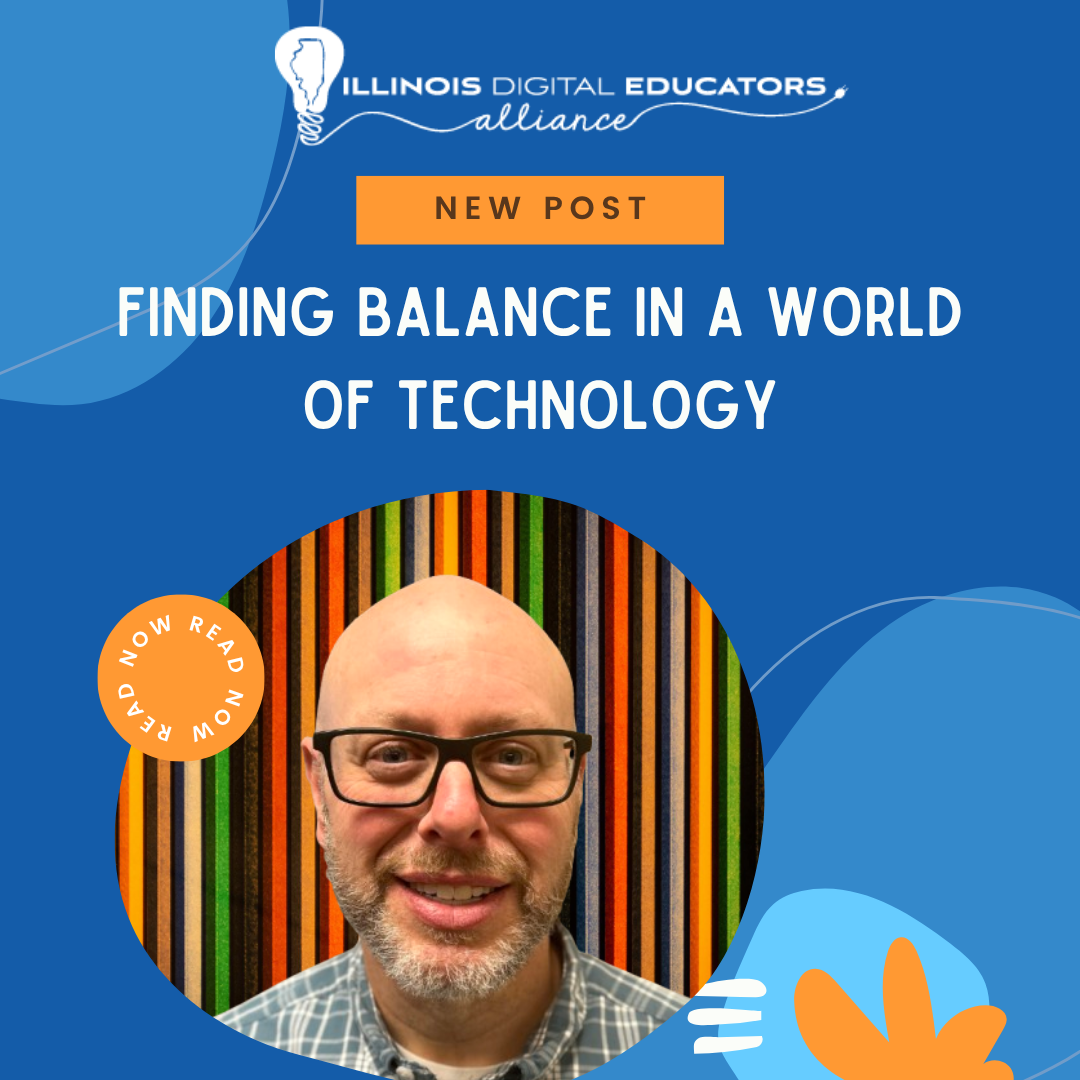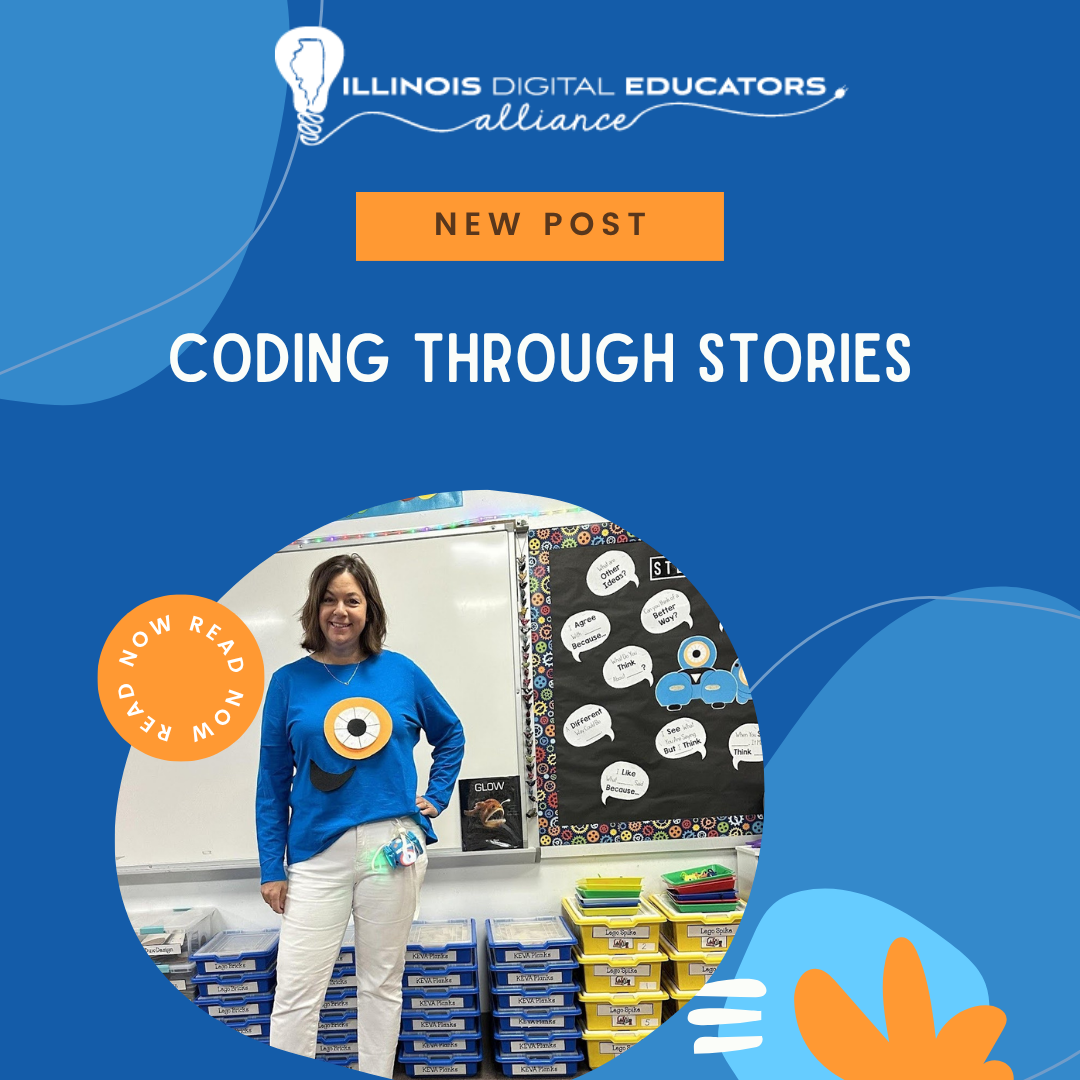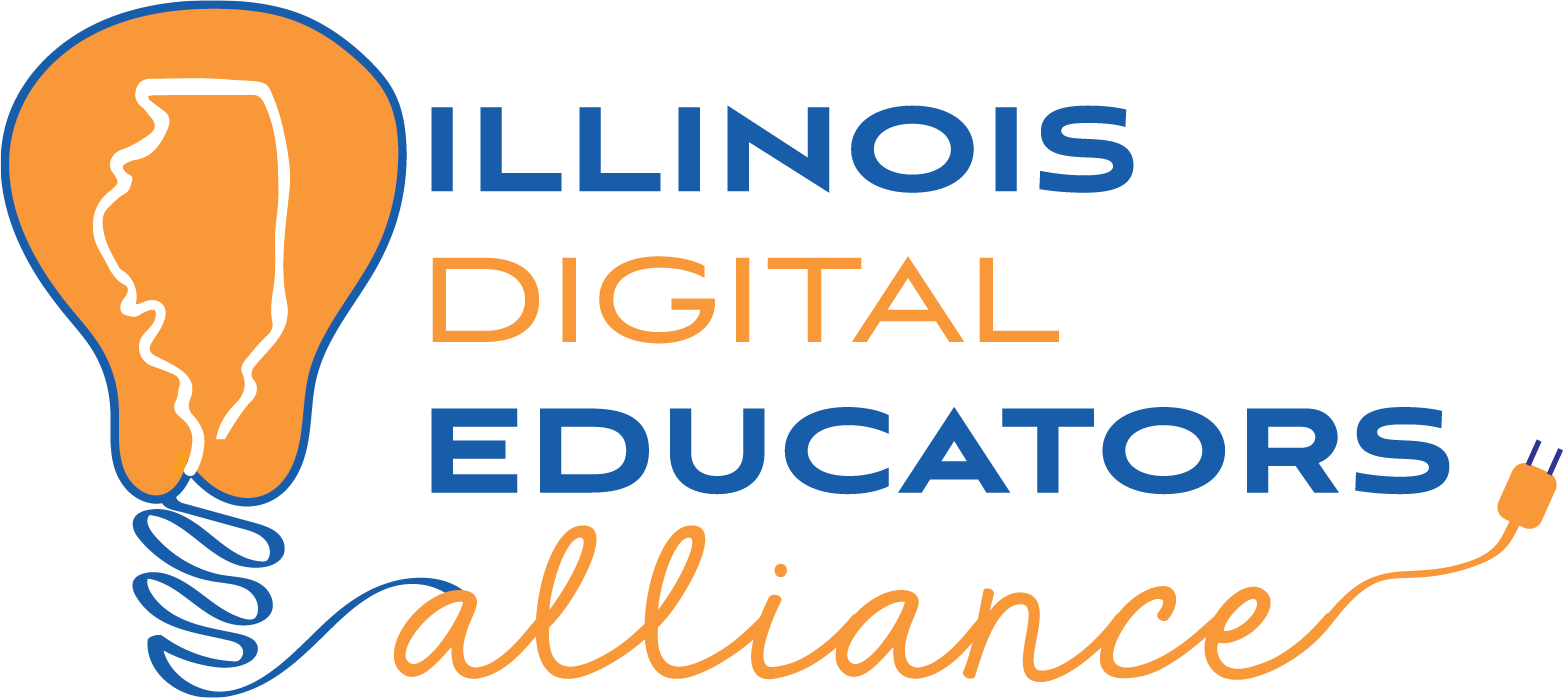Equipping Students With Self-Regulation Skills They Can Use As They Leave For Summer Break
It happens every year. We get excited that school is almost over. And so, schools decide to AMP it up with an ABC countdown! As S is for stuffed animal day and T is for “thank you” day, students are starting to see that the end is near. Behaviors change. And we question “why”? Working in multiple communities across the country, we can tell you that for some kids the thought of summer break brings to mind spending their day in spaces that are not as structured or safe as their school environment creates anxiety. Even some teachers struggle with going on summer break because the change in routine does impact their nervous systems. There are environmental issues students face in their homes over the summer that they don’t face in school, and change is hard for everyone. What can schools do to equip students with self-regulation skills that they can use at home as they leave for summer break?
Teach students how to find routine for mindfulness in their day when they are not in school
Many of us were probably doing this all year, teaching students the importance of WHY we should learn to self-regulate. We need to reinforce this prior to students going on summer break. Letting them know that they will feel different as their schedule changes and they don’t see their friends often and it’s okay. If students have the tools to deal with these shifts between the end of the school year and summer break- it will be much easier for them to adjust again between summer and fall. This is a life skill.
Additionally, we need to give students language about how their brains work. Many of us didn’t learn this until we were adults. Sarah Said has written about ways you teach Brain Science in the classroom for different age groups in this blog written for
Teach Better Team. Students need to learn about neuroplasticity early on in life to help with self-regulation and maintaining a growth mindset.
When we are in the classroom we do what we can to add movement to support students in self-regulation. We implicitly are showing students that movement is important. Before we go on summer break, it’s critical to do what we can to explicitly teach this. Teaching students to schedule a short walk in their day while they are at home or even do a Brain Break video as you do in the classroom while they are at home will keep movement in their day and normalcy.
When we do activities like walking or dancing, it helps us refocus ourselves. However, allowing students to feel the assurance that losing focus/attention is normal. We all do it! This is where we work with students to be more self aware and ask themselves questions like “Why is my mind wandering?” or “What do I need to do to calm my mind and body down?” Teachers can model this in the classroom when they are thrown off task. Students will eventually begin to internalize this more and allow themselves moments to stop and refocus themselves. Even adults need this education and coaching!
As we teach students about focus, it’s important to know about presence. Give time in your classroom for activities like Jenga, planting flowers, writing on the sidewalk with chalk or even making bubbles- something your students would want to do over the summer- that doesn’t involve a phone or tablet that will allow students to reflect on focus and mastery but also presence. Ask them, what did it feel like to do this activity? How did you regain focus when you lost focus? What was challenging in the activity and how did you push through it emotionally?
With teaching presence, executive functioning practices are important too. In Sarah Said’s classroom, she is working with students to create a summer schedule. Goal setting is what they will start with as they set three goals. They will use the sentence starters: “ I will take time to ________________________ everyday.” “ I will spend more time with ____________________.” and “I would like to learn how to _________________.” Students will create a rough schedule of what their routine can look like. They can think about activities they tried and what they want to do. The activity card they are using will actually give suggestions they can choose from. Here is what Said’s model looks like:
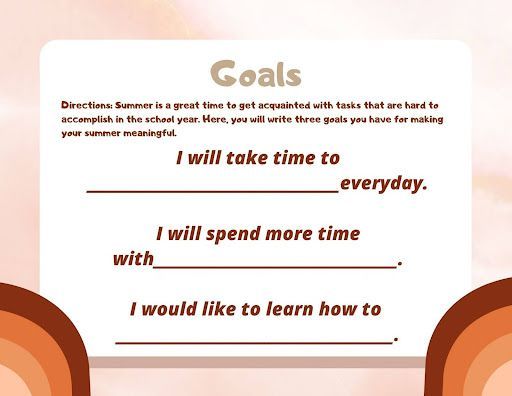
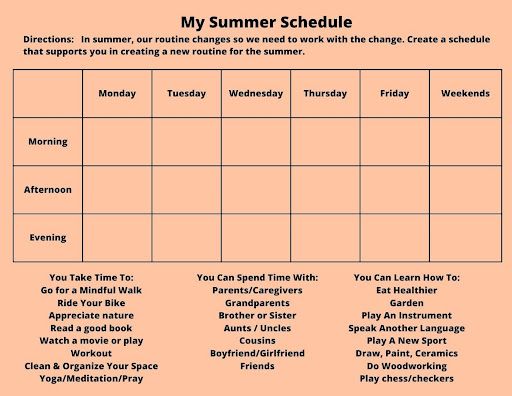
This template was created by Sarah Said on Canva for her High School Social Emotional Learning class.
You can also use an app like Focusable to help students create a routine to manage their own self-regulation and work towards having better attention on the things that matter most to them. Focusable allows you to choose from a wide variety of Recharge activities to help with self-regulation, divided into categories of breathing, visual exercise or visual relief, as well as physical movement and focus. All activities are short, and feature both animations as well as audio that can be switched on or off. The Recharge activities in Focusable are meant to give students choice in how they learn to manage their ability to stay calm, reduce stress, and increase attention. Part of building a routine within Focusable is also taking advantage of the pulse timer to help you refocus your attention on one thing at a time, and the reflection videos, to capture your thoughts in the moment and record the experience. Use each feature separately or all together to create the energy you need to move mindfully through any activity or experience.
Creating A Physical Self-Soothe Take Home Kit
Before kids go over home for the summer, teach them how to create a five senses self-soothing kit that they can take home with them for summer break. You can have items such as small fidgets or scented putty that students can choose from. Separate them in bins related to the five senses. You need to be creative with taste if your school does not allow you to give out mints or candy. You can give time for them to choose items they will take with them. You’d be surprised how excited older students get from inspiration stickers and scented erasers. They can personalize this more by putting them in a bag that they have collaged or decorated.
Instead of Summer Reading, Summer Breathing
Schools can provide students and families with tips on breathing and mindfulness, just as they do books and other suggested activities. In reality,, “summer slide” can be prevented by allowing students to mindfully read, instead of only requiring reading. Focusable is a great way to promote mindful reading - focusing for small batches of time and then reflecting or recharging with self-regulation activities.
Schools should advocate for allowing children to rest during the summer, enjoy play, and even give families lists of mindfulness activities they can do together and individually. Giving children breathing room to explore should be a big part of summer break.
Helping families understand the importance of routines at home will help them help their children become more adapted to school in the fall. Why should they only associate routine with the school day? Summer can be a time to implement different kinds of home and life routines - some of which can be continued in the fall - like taking care of ourselves mentally and physically. Mindfulness is really about attention.
Doing this work in your classroom before summer break will not only give students a calmer outlook on summer, but these skills are important life skills for students as they continue to grow in school and later careers. Students don’t benefit from worksheet packets in summer as much as people think. Teaching students mindfulness, focus and presence will really be what helps academic success later.
This blog was originally posted on May 31, 2023.


